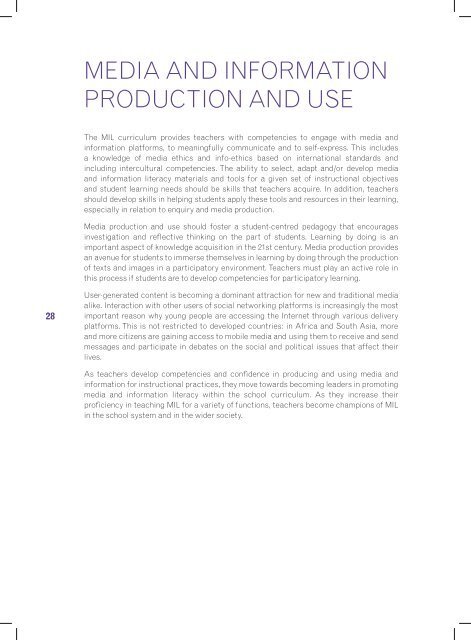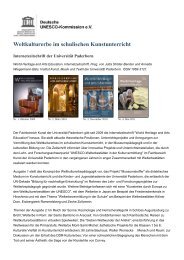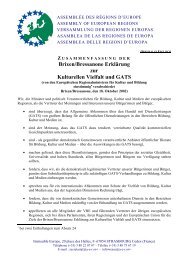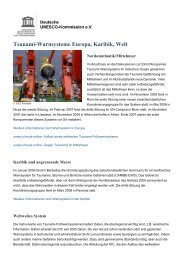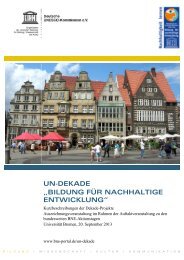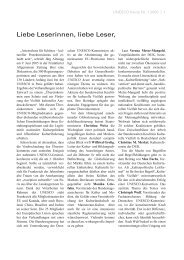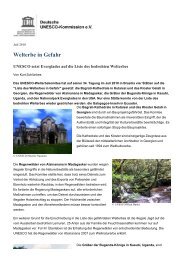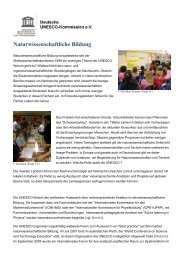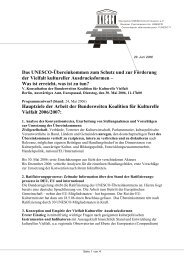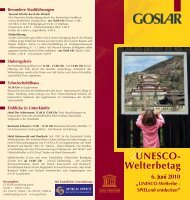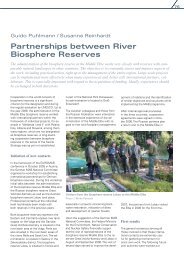Media and information literacy curriculum for teachers.pdf - Yo! BaNa
Media and information literacy curriculum for teachers.pdf - Yo! BaNa
Media and information literacy curriculum for teachers.pdf - Yo! BaNa
Create successful ePaper yourself
Turn your PDF publications into a flip-book with our unique Google optimized e-Paper software.
MEDIA AND INFORMATION<br />
PRODUCTION AND USE<br />
The MIL <strong>curriculum</strong> provides <strong>teachers</strong> with competencies to engage with media <strong>and</strong><br />
<strong>in<strong>for</strong>mation</strong> plat<strong>for</strong>ms, to meaningfully communicate <strong>and</strong> to self-express. This includes<br />
a knowledge of media ethics <strong>and</strong> info-ethics based on international st<strong>and</strong>ards <strong>and</strong><br />
including intercultural competencies. The ability to select, adapt <strong>and</strong>/or develop media<br />
<strong>and</strong> <strong>in<strong>for</strong>mation</strong> <strong>literacy</strong> materials <strong>and</strong> tools <strong>for</strong> a given set of instructional objectives<br />
<strong>and</strong> student learning needs should be skills that <strong>teachers</strong> acquire. In addition, <strong>teachers</strong><br />
should develop skills in helping students apply these tools <strong>and</strong> resources in their learning,<br />
especially in relation to enquiry <strong>and</strong> media production.<br />
<strong>Media</strong> production <strong>and</strong> use should foster a student-centred pedagogy that encourages<br />
investigation <strong>and</strong> reflective thinking on the part of students. Learning by doing is an<br />
important aspect of knowledge acquisition in the 21st century. <strong>Media</strong> production provides<br />
an avenue <strong>for</strong> students to immerse themselves in learning by doing through the production<br />
of texts <strong>and</strong> images in a participatory environment. Teachers must play an active role in<br />
this process if students are to develop competencies <strong>for</strong> participatory learning.<br />
28<br />
User-generated content is becoming a dominant attraction <strong>for</strong> new <strong>and</strong> traditional media<br />
alike. Interaction with other users of social networking plat<strong>for</strong>ms is increasingly the most<br />
important reason why young people are accessing the Internet through various delivery<br />
plat<strong>for</strong>ms. This is not restricted to developed countries: in Africa <strong>and</strong> South Asia, more<br />
<strong>and</strong> more citizens are gaining access to mobile media <strong>and</strong> using them to receive <strong>and</strong> send<br />
messages <strong>and</strong> participate in debates on the social <strong>and</strong> political issues that affect their<br />
lives.<br />
As <strong>teachers</strong> develop competencies <strong>and</strong> confidence in producing <strong>and</strong> using media <strong>and</strong><br />
<strong>in<strong>for</strong>mation</strong> <strong>for</strong> instructional practices, they move towards becoming leaders in promoting<br />
media <strong>and</strong> <strong>in<strong>for</strong>mation</strong> <strong>literacy</strong> within the school <strong>curriculum</strong>. As they increase their<br />
proficiency in teaching MIL <strong>for</strong> a variety of functions, <strong>teachers</strong> become champions of MIL<br />
in the school system <strong>and</strong> in the wider society.


